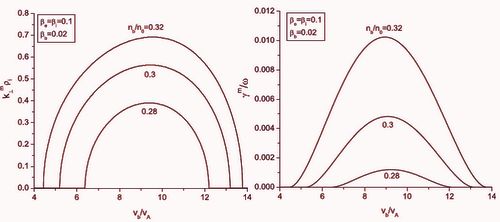Kinetic Alfven waves (KAWs), which are known as dispersive Alfven waves (AWs) with a short perpendicular wavelength, can play an important role in the energization of plasma particles. Since discovered in the 1970s, KAWs have been extensively studied and applied to laboratory, astrophysical and space plasmas. Also, the mechanisms of the generation and excitation of KAWs are of interest for wide fields. Recently, we investigate the KAWs driven by a fast electron beam in finite-β(Q<β<1) plasmas (whereβis the kinetic-to-magnetic pressure ratio and Q ≡ me / mi is the mass ratio of electrons to ions). Different from previous papers by other authors, the return-current effect of fast electron beams has been considered in our paper. The results show that electron-beam-driven KAWs and proton-beam driven KAWs have different driven sources. Specifically, the kinetic resonant interaction of beam electrons is the driving source for KAW instability, unlike the case driven by a fast ion beam, where both the kinetic resonant interaction of beam ions and the return-current are the driving source for the KAW instability. The results also show that both the maximal growing perpendicular wave number and the maximal growth rate depend sensitively on the velocity of electron beam, and the most favorable beam velocity occurs between 8vA < vb < 10vA (See Figure for more detail) A possible application to the upward electron beams in the terrestrial magnetosphere is briefly discussed. This work has been published on ‘The Astrophysical Journal, 793:13 (5pp), 2014’ and can be downloaded here: http://iopscience.iop.org/0004-637X/793/1/13 
By with CHEN Lin Fig. Normalized maximal growing perpendicular wave number km⊥ρi (left) and the maximal growth rate γ m/ω at km⊥ (right) vs. the normalized electron beamvelocity vb/vA, where the solid lines correspond to the electron beam number density nb/n0 = 0.28, 0.3, 0.32. The parameters βe = βi = 0.1 and βb = 0.02 havebeen used. |
